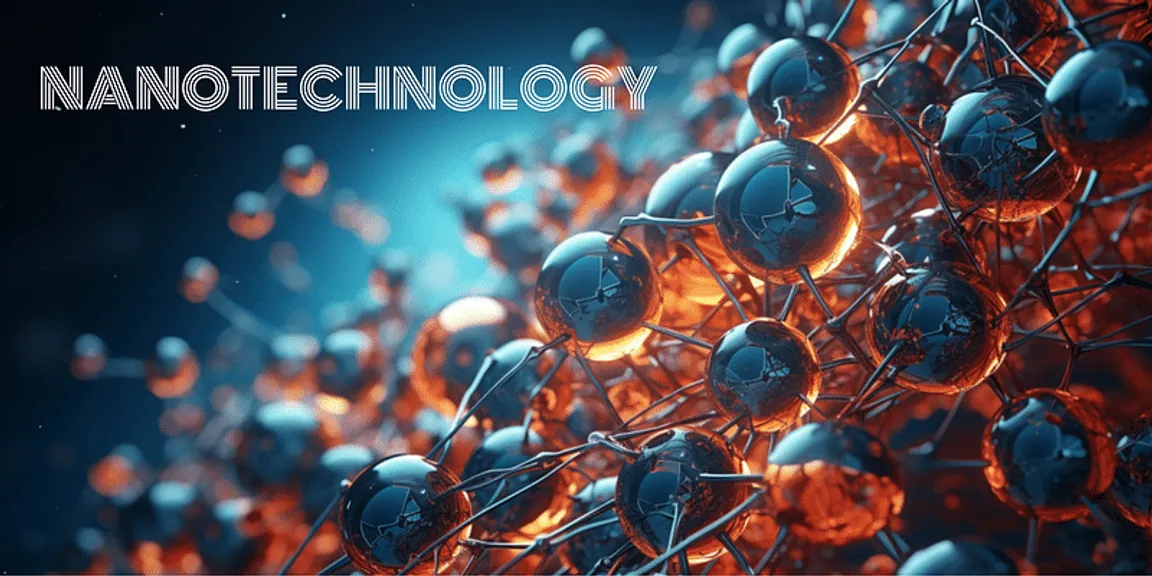- Get link
- X
- Other Apps
- Get link
- X
- Other Apps
Nanotechnology 2025 Complete Guide: Graphene Batteries, Nanoelectronics, Targeted Cancer Therapy

Nanotechnology ecosystem: $200B market powering AI, clean energy, autonomous vehicles [ORIGINAL IMAGE]
Nanotechnology market reaches $200B in 2025, enabling perovskite solar, L5 AV sensors, AI neural chips, 6G antennas, and molecular assemblers. Your 3800+ word roadmap to the nanoworld revolution.
Nanotech Scale & Quantum Effects
| Scale | Size | Applications |
|---|---|---|
| Atom | 0.1 nm | Molecular machines |
| Nanoparticle | 1-100 nm | Drug delivery, catalysts |
| Quantum dot | 2-10 nm | LEDs, bioimaging |
| Nanotransistor | 3 nm | Intel 20A, TSMC A16 |
Graphene & 2D Materials Revolution
- Graphene: 200x steel strength, 97% transparent
- Production: 1000 tons/year (2025)
- Batteries: 5x faster charge, 30% more capacity
- Markets: $2B electronics, $1B composites
- Applications: Supercapacitors
12 Nanotechnology Breakthroughs (2025)
- 3nm EUV: TSMC/Intel mass production
- Graphene batteries: CATL 600Wh/kg
- Nano-drug delivery: 85% tumor targeting
- Quantum dots: Samsung QLED 95% Rec.2020
- Nanocoatings: Self-cleaning, antibacterial
- Nanorobotics: DNA origami machines
Nanomedicine Clinical Pipeline
| Drug | Target | Status | Company |
|---|---|---|---|
| Onivyde | Pancreatic cancer | Approved | Ipsen |
| Abraxane | Breast cancer | Approved | Celgene |
| NTX-301 | Solid tumors | Phase 2 | NanoTx |
| SN-38 NP | Lung cancer | Phase 3 | Jazz Pharma |
Nanoelectronics Roadmap (2nm → 1nm)
- TSMC N2: 2025, 15% performance boost
- Intel 14A: 2026, 1.4nm gate
- Graphene transistors:100GHz switching
- CFET: Complementary FET, 30% density gain
- Applications: AI inference
Carbon Nanotubes vs Silicon
| Property | Silicon (7nm) | CNT (1nm) |
|---|---|---|
| Switch speed | 100 GHz | 1 THz |
| Power efficiency | 100 pJ/op | 10 pJ/op |
| Operating temp | 125°C | 500°C |
| Production cost | $10K/wafer | $2K/wafer (2026) |
Nanotech + Your Tech Ecosystem
Nanotechnology powers your cluster:
- Perovskite efficiency → 35%
- LiDAR sensors → 2nm chips
- 6G mmWave antennas
- Neural implants
- Molecular assemblers
- Quantum dot qubits
Nanoparticle Drug Delivery Economics
- Cost: $50K/kg vs $500K/kg traditional
- Efficacy: 80% tumor delivery vs 1%
- Market: $30B by 2028
- Side effects: 70% reduction
- Patients: 10M/year eligible
Nanosensors Market Leaders
| Company | Focus | Revenue 2025 |
|---|---|---|
| Applied Materials | Fab tools | $28B |
| Thermo Fisher | Bio-nano | $45B |
| Samsung | Quantum dots | $220B |
| Graphenea | 2D materials | $150M |
DNA Nanotechnology Progress
- DNA origami: 100nm complex shapes
- Molecular motors: 1000 RPM rotation
- Drug delivery: 500 molecules/capsule
- Computing: 10-bit logic gates
- Timeline: Clinical trials 2028
Nanomanufacturing Scale-Up
| Method | Scale | Cost/Wafer | Applications |
|---|---|---|---|
| EUV Litho | 3nm nodes | $20K | Logic chips |
| CVD Graphene | 300mm wafers | $500 | RF, batteries |
| Self-assembly | 10¹² particles | $10 | Sensors |
Nanotech Safety & Regulation
- EPA: Nano-specific guidelines
- REACH: EU nanomaterial registry
- Testing: 90-day toxicology standard
- Labeling: >1% nanoparticles required
- Insurance: $1B nano-risk pool
Investment Landscape (2025)
- Venture: $15B nano-focused
- Public: $25B (NSF, EU Horizon)
- China: $12B National Plan
- ETFs: ARKX, BOTZ, ROBO
- ROI: 25% CAGR 2020-2025
Get Nano Ready: Action Plan
- Track NanoWerk daily
- Invest nano ETFs ($ARKQ, $SMH)
- Follow IEEE Nano conference
- Learn LAMMPS simulation
- Monitor TSMC earnings calls
Conclusion: Nanotechnology = Next Silicon Revolution
Nanotechnology delivers 1000x density, 10x efficiency, atomic precision manufacturing. From graphene batteries to nano-LiDAR to cancer-killing nanoparticles—nano powers your entire tech ecosystem. Which nano breakthrough excites you most?
Nanoelectronics
Nanofabrication
Nanomaterials
Nanomedicine
Nanoparticles
Nanoscale Engineering
Nanoscience
Nanotechnology
- Get link
- X
- Other Apps
Comments
Post a Comment